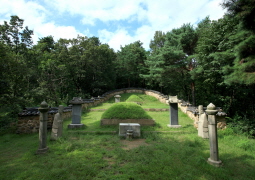
Tomb of the general Young Choi, a transparent figure without interest in materials
Designation number: Monument 23 in Gyeonggi-do
Location: 70-2 Daejadong-Mountain, Deokyang-gu, Goyang-si, Gyeonggi-do
The general, Young Choi, is a famous general that represents Goyang areas with the general Yul Kwon. Young Choi was a character born in the noble family in 1316 when the king Chungsuk was in reign (1294-1339). He was the son of Wonjik who served a role of director in Sahunby as well as the fifth generation of Yuchung Choi who was Taehaksa in Jiphyeonjeon. Young Choi was alo the father-in-law of the king, Woo (1365-1389), who was murdered by Sunghye Lee.
At last, Young Choi was a figure representing ‘noble power’ in the interest relationship through blooc with Koryo Dynasty. His tomb is located at the foot of Daekasan Mountain, Daeja-dong, Deokyang-gu, Goyang-si, and there is a tomb of Wonjik Choi, his father, behind it.
The tomb of Young Choi was located with his wife, Munhwa, with the last name Ryu, in the front, and his father’s tomb is a single tomb.
Both tombs were made with Doolesuk in the square in the beginning of Koryo and Joseon Dynasty. It is a famous square tomb in our city.
On the left side of his father’s tomb, there is a memorial stone built by the general, Young Choim and there is a cover stone that is well-preserved and is written as 瑩 stone at the edge.
General, Young Choi, is the famous soldier in the end of Koryo Dynasty that defeated Honggunjeok and Japanese soldiers but ended up dying at Gaeseong Wihwado retreat by the soldiers, Sungye Lee, and Minsoo Cho, under him as he proceeded to conquer Yodong after predicting the rampancy of Ming Dynasty. Some of the shamans are still serving him as 靈神, and Young Choi is of a transparent figure for public servants.
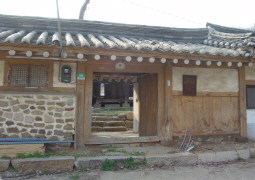
The most beautiful Korean traditional house in Goyang, Youngsa-jeong
[Image before restoration]
[Image after restoration]
Designation number: Cultural asset in Gyeonggi-do, 157
Location: Daeja-dong, Deokyang-gu, Goyang-si
Youngsa-jung is an old Korean traditional house located at Daeja-dong, Goyang-si, and it was 1709 when it was firstly built in the reign of Sukjong in Joseon Dynasty. In other words, it has a history of 300 years or over.
Youngsa-jung was named after the father-in-law of Sukjong, Jushin Kim, as he would never forget his father, Iljin Kim. Main building is shaped inside, and a men’s part of the house is shaped. Overall, it is shaped as a Korean traditional house. Shrine and kitchen are located together, and records are clearly preserved for the construction, repair, maintenance, and carpenter that it was designated as a cultural asset in Gyeonggi-do. Especially, this house faced to the east that major peaks of Bukhansan Mountain are seen at a glance from here and there of the house. This is the best Korean traditional house in Goyang.
Youngsa-jung is a rare building with a clear year of construction (1709). According to architectural characteristics for taking the form of regular house and the historical meaning as a relics related to the queen, Inwon, it was designated as the 157th cultural asset in Gyeonggi-do, on March, 2010, while proceeding restoration procedures. In 2014, restoration was completed as a part of monument business for the 600th anniversary of Goyang.
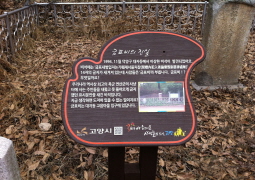
Confirmed the tyranny of Yunsangun in the field, Geumpyobi in the era of Yunsangun
Designation number: Cultural asset 88
location: 10-2 Daeja-dong, Deokyang-gu, Goyang-si, Gyeonggi-do
Yunsangun is closely related to Goyang-si.
He made his aunt, a wife of Wolsandae-gun, die, and prohibited all others from accessing the Goyang-si areas so that only he could play there. Geumpyobi is the record vividly showing the circumstances at that time.
Areas near Goyang-si were devastated in the beginning of Yunsangun in the early 16th century. In the 10th year of Yunsangun (1504), he demolished all the private houses outside of castle to play and hunt and blocked transportation for citizens by blocking all the roads towards Hansung except for the areas of Noryangjin.
Becoming slaves, citizens started blaming him, and Goyang-si belonged to Yangju.
In 1506, he ended up dying as he was banished to Ganghwa due to the rebellion against Jungjong that each gun was restored including Goyang-gun while reforming the misgovernment of Yunsangun.
Geumpyobi in the period of Yunsangun was built to demolish the areas in Goyang-gun in the period of Yunsangun repelling all the citizens and determining the non-accessible aeas for his entertainment. This is the memorial stone that is easily found in the road connecting Seoul and Uiju. Geumpyobi is the one and only memorial stone in Goyang-si and also in Korea.
In front of Geumpyobi, there is a statement saying that anyone entering this area will be executed without trial. Especially, he removed everything in Goyang-areas from 1504 to 1506 prohibiting people from living there. Anyone violating this rule had their three sets of relatives died.
This Geumpyobi shows the tyranny of Yunsangun in the field as an important cultural value.
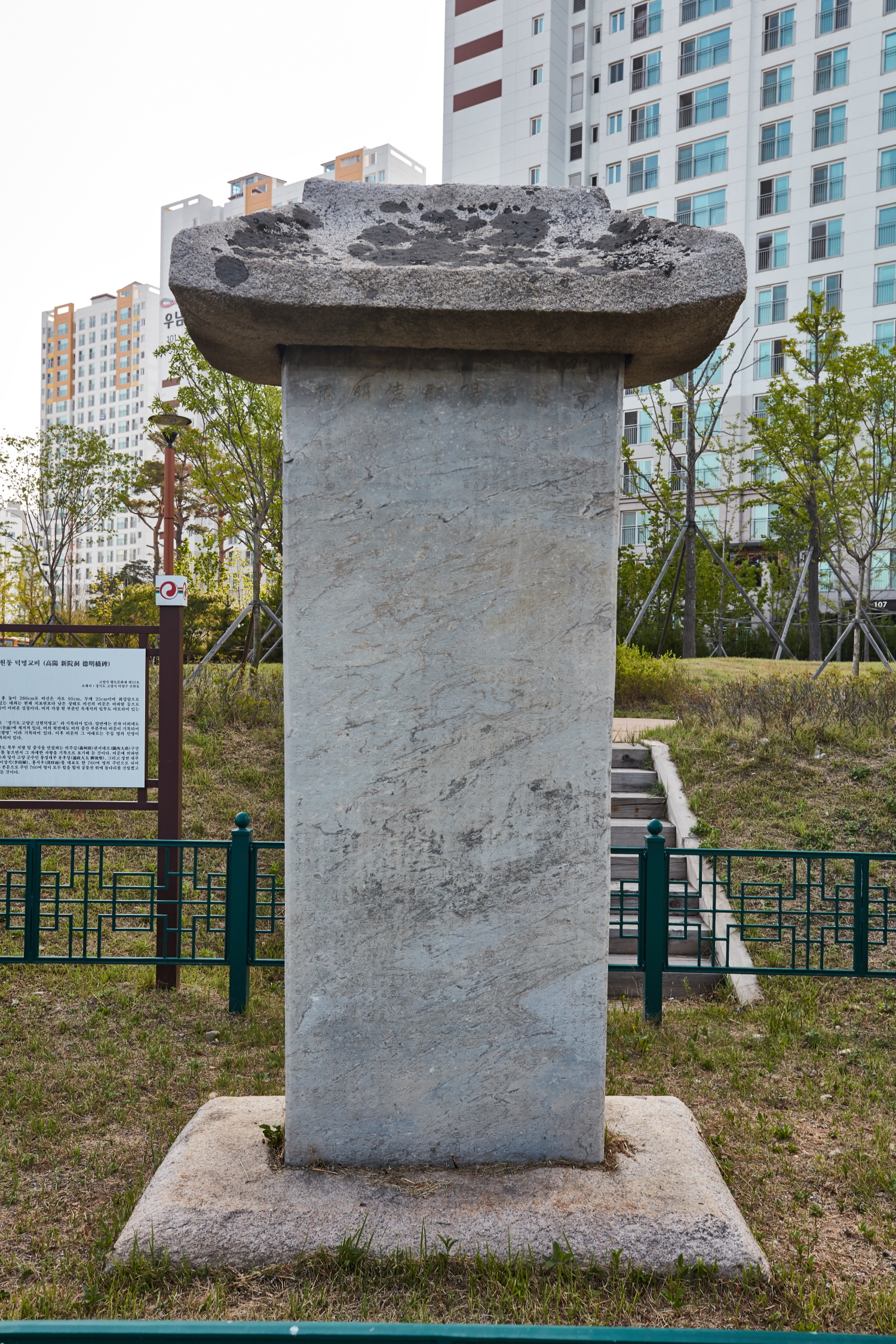
Record the history after making stone bridge in Gongreungcheon. Sinwon-dong, Dukmyunggyp bridge
호
Designation number: Regional cultural asset 52
location: 1685 Sinwon-dong, Deokyang-gu
This bridge stone is located at the soccer stadium of small and medium business bank in liberation village at Sinwon-dong. This memorial stone is buried in Daejwa for the entire area. The entire texture of the stone is granite stone, and the part of roof of stone stupa has been abraded.
Front side of the memorial stone is the 篆字 that is written as ‘Dukmyung bridge at Goyang-gun, Gyeonggi-do.’ Other than 篆字 on the front side, there is a epitaph with letters on the entire areas. On the back of stone, there is an epitaph from the middle of the stone stating, ‘Dukmyung bridge in Goyangsiwon.’ In addition, names of tens of people are stated bicipital letters underneath them.
Contents of the memorial stone are about details for how the bridge was constructed on Gongreungcheon in Sinwon-dong at Gwanseo-ro that connected Hayang and northern areas.
According to this epitaph, constructor of this memorial stone was a group of 760 citizens represented by Hoosung Yoon as an administrator at Goyang, Myunji Yoon, the Junghundaebu, and Sangsik Lee, and Sihoo Hong. In other words, front side of it stated how about 760 citizens cooperated with each other constructing the stone bridge. The year of construction for this bridge was the 9th year of Hyojung (1658). As an epitaph stating the history of areas in Gongreung, it is valuable as a cultural asset.
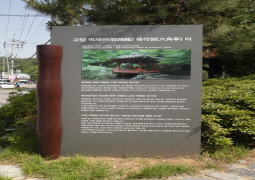
Uijuroo, the hub of history in Goyang, Byukjegwanji
Designation number: Historical site 144
Location: 55-1 Goyang-dong, Deokyang-gu, Goyang-s, Gyeonggi-do
Located at Goyang-dong in Deokyang-gu, Byukjegwanji is a cultural heritage that shows the long history in this area along with Goyang Hyanggyo and ginko tree at Hyanggyogol. The name of Goyang-dong was made as there were important public organizations such as Goyang gun-office or Byukjegwanfor 289 years from 1625 to 1914. Goyang-dong has been a hub of transportation from the past where Paju, Yangju, and Goyang-areas met.
It was an area connecting Hayang as a capital in Joseon Dynasty to Gaeseong, the capital in Koryo Dynasty. Byukjegwan was the main building as a Gyeonguidae-ro that high ranked officials passed by in Korea as well as the diplomats from China.
Byukjegwanji was the 客館 located in Goyang-dong, Deokyang-gu, in Goyang-si, and had been serving as an important role for the transportation between Uijuro and Yeongyung-ro in connection with Soeul, Uiju, and China.
As it was located from the early Joseon Dynasty, it is a cultural asset with well-preserved record including 1428 times of repairing and relocation/maintenance in 1625.
Especially, this place became famous from Byukjegwan battle between allied soldiers from Joseon Dynasty and Japanese soldiers. According to the photo from the Japanese colonization period, both sides of the place were made of floors, and the middle was made with rooms. There were three doors at the main part of the structure. Due to investigation for multiple times, the size and function of the area were confirmed. Byukjegwan was the place where Goyang gun-leader served king plate or castle plate other than the functions for serving ambassadors. In addition, this was a place used for accommodation where managers or quests from outside stayed. In addition, this place was used for the trial against local lawsuit by the manager dispatched from central government. In addition, Byukjegwan was used as a temporary administrative castle as there were royal tombs in Joseon Dynasty near the place. On the other hand, the governor in Japan, Terauchi, took the Yukgakjeong, the supplementary building of Byukjegwan, to Japan, and it was severely damaged from Korean War. Thereafter, only the foundation stones or Gidanseoks are left.
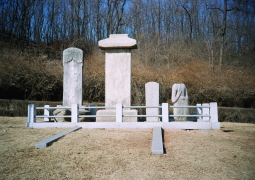
Stone statue of meal grandmother, the army of justice, during Japanese invasion
Designtion number: Regional cultural asset 46
Location: In the grandmother park at Dongsan-dong, Deokyang-gu, Goyang-si, Gyeonggi-do
There is one stone statue facing Bukhansan Mountain with damaged areas around neck in the Dongsandong village at Tongil-ro that is messu due to the development of Tongil-ro on the national road number 1, Hanchang Samsong new city, and Eunpyeong new town. Called as grandmother or old stone grandmother by residents in this village for a long time, this statue has been designated as the regional cultural asset in Goyang-si and preserved. This statue has its height of 141cm and width of 85m. Residents in the village perform the ritual ceremony in front of this statue praying for the peace and development of the village. Meal grandmother at Dongsan-dong has her last name Oh from Haeju (There is a story that her last name was Park from Milyang).
During the outbreak of Japanese invasion, she ended up achieving accomplishments in Korea as she helped armies of justice and royal forces. Goyang-areas regard meal grandmother as a female leader in military of justice that contributed to win over the siege of Hangju. At that time, she was known to participate in rescuing activities for citizens who had difficulty due to the siege of Byungja. According to the social study textbook for third graders of elementary school in Goyang-si, stories about this meal grandmother are introduced as a legend.
Due to how Joseon military defeated Ming Dynasty after they were surrounded in Bukhansan Mountain, many of the students visit the status of meal grandmother at Dongsan-dong and made an effort to learn about it by taking a picture.
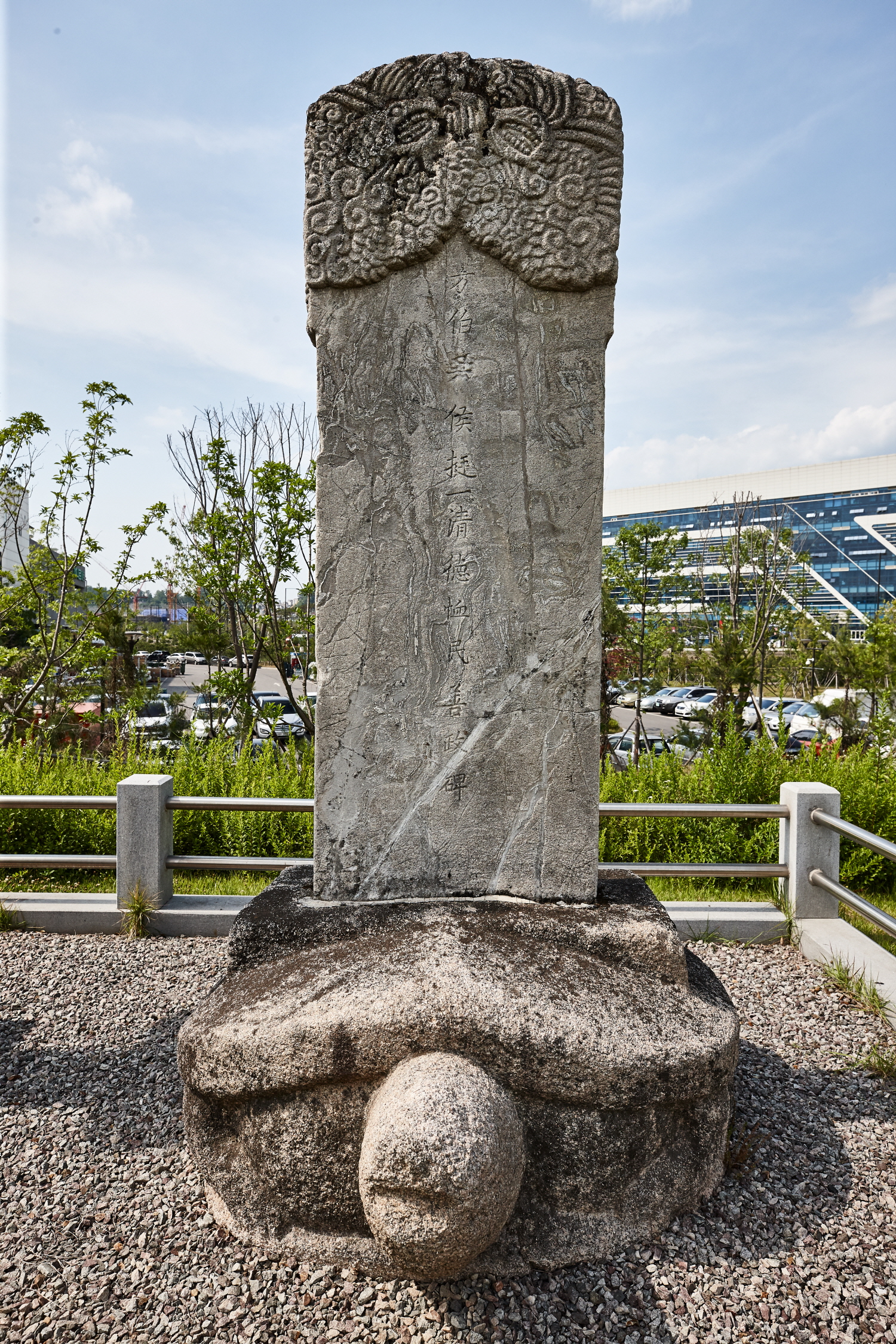
Epitaph at Dongsan-dong including the memorial stones of Gwanchalsa, Goyang governor, and Duksuja in Gyeonggi-do
Designation number: Regional cultural asset 47
location: 10-2 Dongsan-dong, Deokyang-gu, Goyang-si
Biseok-gun at Dongsan-dong, Goyang-si, is located at the park around the corner of Changreung at Tongilro with the statue of meal grandmother. Biseok-gun has Jungil Oh Seonjungbi, Dukjsu Ja Bobimyung, and Unchan Sunjungbi in order from the right side. These memorial stones show the current status of the historical circumstances, major relics, and roads as well as figures in Goyang-si about 350 years ago. Due to many of the records in bicipital indications, this place was acknowledged for the research of local history and Korean literature.
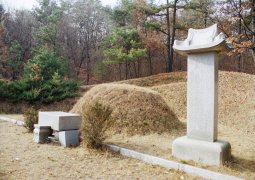
Tomb of Hongjib Kim, the first prime minister in Korea
Designation number: Regional cultural asset 24
location: 26-1 Daejadong-Mountain, Deokyang-gun, Goyang-si, Gyeonggi-do
Tomb of Hongjib Kim is located at 200m behind Youngsajung in Daeja-dong, Deokyang-gu, in Goyang-si, and is the representative tomb made in the later Joseon Dynasty in Goyang-si.
As a tomb designated as the regional cultural asset 24 in Goyang-si, this is the tomb buried with the Junggyung Hong from Namyang. In front of the tomb, there is one memorial tomb that seems to be built in Joseon Dynasty in 1896. This is known to be built by the descendant, Jungrok Kim. In front of this stone, there are Sangseok, Honyuseok, and Mangjuseok. In the middle of tomb, there is Jangmyungdeong 長明燈. Hongjib Kim is the government officer and politician in the later Joseon Dynasty serving as the first vice-premier, the second vice premier, and the first prime minister. He is the main character in the modern history of Korea who lead Gapogyeongjang in 1894.
As a moderate liberal party member, he identified the sign of reformation. After the failure of radical liberal party on Gapsinjeongbyeon, he was chosen to be a person to take care of follow-up procedures and alo serve as an important position of the first vice-premier and also foreign affair manager. He concluded the Japan-Korea Treaty in 1885.
Afterwards, his cabinet was dismissed due to Korea royal refugee at the Russian legislation in February, 1896, and he was killed by a crow at Gwanghwamun as he was chosen as 倭大臣 as 親露 reigned.
Afterwards, he was granted with 忠獻 and honored as Daejehak.
Tomb was located at Imjin-myeon at Paju-gun, Gyeonggi-do. However, it was relocated to Daejeri, Byukje-myeon, in Gyeonggi-do after 6.25 Korean War.
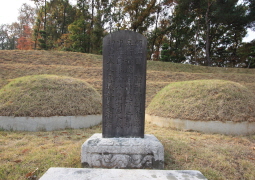
Tomb of Jinam Kim, a character in the late Joseon Dynasty who built Junggyebi in Baekdu Mountain
Designation number: Regional cultural asset 51
location: 195-5 Ogeumdong-san, Deokyang-gu, Goyang-si, Gyeonggi-do
Tomb of Jinam Kim is located at the tomb of Ubong Kim to the right side of Ogeumdong Sootdolgogae, and Sangseok and Hyangroseok are located in the tomb of Jinam Kim. Especially, important historical facts are recorded on the tomb. It says the record of how he climbed up to Baekdusan Mountain during the reign of Sukjong and established Junggyebi of Baekdusan after making the boundary clear with ambassadors in Cheong. Contents of the tomb are as follows.
The emperor Gangui investigated the northern areas by dispatching Mokgeukdong, but Joyang was suspicious and concerned.
Bulcho was performed even if the Jubbansa Kwon Park asked the king for the sake of Gong. What Mokgeukdong said Gong was that ‘Since the boundary was not clear on the areas 2-3 kilometers to the west of Duman River and to the east of Aprokgang Rive, citizens tend to pass through the boundary. Therefore, king has ordered to screen them for passing the boundary.’ What Gong answered was that ‘Both rivers really became the boundaries and also the areas below the river when seen from the origin of Namsang. Therefore, it is still difficult for us to consider them as a boundary between two countries.”
They followed Mokgeungdong since he was accurate. At last, they built stones at where water came out from the peak of Baekdu Mountain and setup the boundaries. According to the records from literatures suich as annals of Joseon Dynasty, there are many of the related records.
However, it is a very rare case that Junggyebi was built among the royal tombs. Jinam Kim was a Yukgwan. His family clan was 牛蜂, and his name was 季明. His other name was 廣川. He passed one of the national exams and served as Yukgwan.
In addition, he wrote about Jacho ethod (boiling dist to make gunpowder) as a way to make gunpoweder as well as Sinjeonjachobang and Dongmungwanji. Jinam Kim was known to be Yukgwan and a character that achieved great accomplishment in the late Joseon Dynasty.
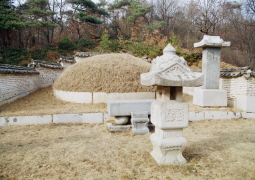
Tomb as a textbook in the late Joseon Dynasty, the tomb of Jusin Kim
Designation number: Regional cultural asset 18
location: 26-1 Daejadong Mountain, Deokyang-gu, Goyang-si, Gyeonggi-do
Jusin Kim was a father-in-law of Sukjong as a civil servant in the late Joseon Dynasty and also the father of the second queen of Sukjong, Inwon. His last name was Kim from Gyeongju. He was served in Gyeongreun Buwon-gun, and his other name was 孝簡公.
In 1686 (12th year of Sukjong), he passed Saenwonsi as a top candidate and served as Jangwonseobyulgum the next year and Guihuseobyulje in 1699 followed by Sahunbu officer and Hojojwarang. In addition, he was famous as a character serving his father, Iljin Kim, below his tomb in Youngsajeong. He was very filial and had a strong discipline, and his writings were known to contain serious meaning. His tomb was located about 200m behind Youngsajeong at Daeja-dong, Deokyang-gu, Goyang-si. Unlike the tombs in the early Joseon Dynasty, Gokjang was left from roof tiles behind circular burial mound. On the roof tiles and wall of Gokjang, there are flower patterns.
His tomb is well-preserved with original shape like the tombs of high rank officers or royal families of the king in the late Joseon Dynasty. First of all, there is a Bigalmyung to the right of the tomb. There are bullet marks. In front of the tomb, there is a Muninseok where grandiose and splendid patterns are enscribed. There is a Jangmyungdeong between two Muninseokgs. Behind Jangmyungdeung, there is a Honyuseok along with Hoseok so that soil and grass are not collapsed below the circular burial mounds.
In addition, there are epitaphs indicating the direction here and there around the Duleseok made in granite stone. To the west and south of Youngsajeong, there is a Sindobi of Jusin Kim. This has been designated as regional culture asset 18.
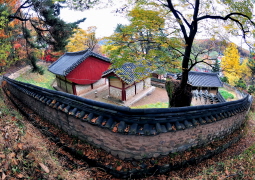
The oldest traditional education institution in Goyang, panoramic viewe of Goyanghyanggyo
Goyanghyanggyo is located at Hyanggyo village at Goyang-dong, Deokyang-gu, in Goyang-si near the foot of Daejasan Mountain that faces to Bukhansan Mountain. On the entrance of Hyanggyo, there is a Hongsalmun door. Behind it, there is a Uisam door. Passing through it, there are the lecture hall in the front and Myungryundang that was a classroom in the past. On the floor of Myungryundang, there are photos of people who served as 典敎 at Goyanghyanggyo in the past. To the left and right of Myungryundang, there are Dongjae and Seojae as a small building. They were used as a room for students to study in the past. However, they are used as a place for preserving clothes or other items. Hyanggyo has a function of education and rite.
Naesam door inside of Hyanggyo is the one that distinguishes them both. In front of Naesam door, there is a building, Daeseongjeon that serves five of the saints including Confucius. At Daeseongjeong, a huge festival called Seokjeondae Festival, is held every year for Buddha’s birthday. To the left and right of Daeseongjeon, there are Dongmu and Seomu that serve scholars and saints in Korea and some of the Confucian scholars from China. Behind the Seomu, there is a small Jeonsacheong building that preserves old utensils used in ancestral rites.
Goyanghyanggyo is the oldest traditional education institution in Goyang areas. It was called as Goyangmun tomb in 1398 and was relocated in 1428, and positioned in the current area in 165.
Parts that were lost during 6.25 Korean War were restored in the 1980s that many of the businesses are being proceeded according to Korean traditional courtesy such as traditional character education and Hyanggyo culture education.
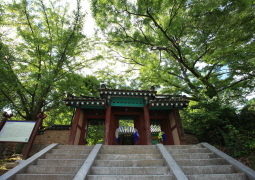
Goyanghyanggyo Uisam door
As a door of main gate in Goyanghyanggyo, the door to the east is where people enter, and the middle door is for the God to enter. In addition, the door to the west is for people to come out.
Inside of three doors, there are Goyanghyanggyo Jungchang and repair recording doors that represent the history of Goyanghyanggyo.











